
If you are in SEO, you may have already heard about rich snippets. If you have gone through our previous articles, you would have heard about it, too.
Originally, the search results or SERPs listed sites and the title is a clickable link in blue which will lead searchers to the site.
As we all know, the Google regularly updates its algorithm and the search engine results page to include additional features that can improve search. Today, the search results page includes a lot of a rich content type such as the knowledge graphs, featured snippets, carousels, product list advertising, and Google Ads. These are just a few examples that aims to enhance user’s search experience and user engagement.
With the current competition in SEO, ranking in the SERP is not enough. In fact, you need to make sure your listing maximizes its position. This is where Rich snippets come in.
Rich snippets can help improve your listing by grabbing more space and attention on the page, making it stand out among other results, especially if there’s a high search volume.
So what are rich snippets, why are they important, and how can you apply them to your site?
Rich snippets are supplementary bits of information that can be displayed below the meta title or description on a search listing.
For instance, star ratings, cooking times and calories on recipe results, or hours and locations on event listings, are just a few examples of rich snippets.
Structured data markup used in the code on the page causes these extra bits of information to show up in the search results. Rich snippets are used by Google to improve the SERP listing and deliver crucial information right on the SERP page.
A normal search snippet includes the following items: Title, URL, Description, Date (not always).
While a rich snippet may include one or more of the following elements: Title, URL, Description, Date information, Product Images, Product Reviews, Ratings, Price information, Name of the website, Icon of the website.
Rich snippets stand out from the rest of the search results. They have a much prettier appearance and provide users with more information just by looking at them. This improves your site’s exposure while also increasing your click-through rate.
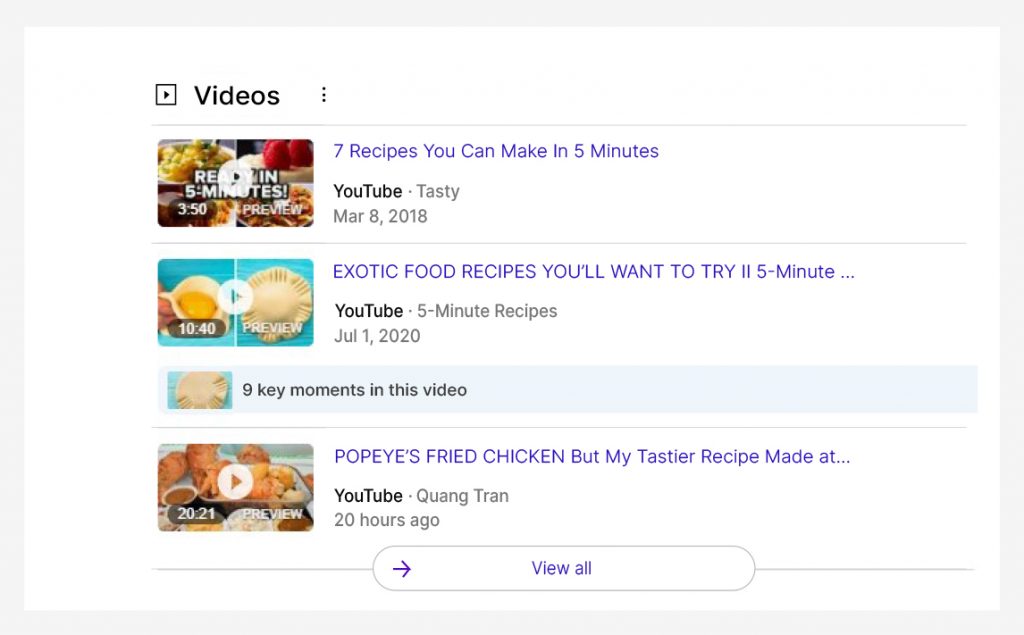
Rich snippets have a higher click-through rate than standard snippets. People prefer to click on the results that provide them with further information about what they are looking for.
You’ll obtain more traffic from a search result if the click-through rate of a snippet increases.
That isn’t all, however. Rich snippets will have an impact on your ranking, in the long run.
Google will detect that people prefer your page to others as more people click on your result. This shows Google that your page is a good match for that specific search, which will boost your rankings over time.
Now that you know what rich snippets are and their importance, let’s look at how to get a rich snippet to show up for your search listing.
The first step is to figure out what kind of Rich Snippet you want. You may then utilize Structured Markup or Schema to get Rich Snippets in the SERPs that are specifically suited for that type of Rich Snippet.
There are many different types of Rich Snippets. However, many of them (such as flight information and books) are only applicable to a specific sort of website.
Due to this, we’ll concentrate on the eight most common varieties of Rich Snippets.
A star rating appears beneath the description in the review snippet. Star rating can also be found in the knowledge panel.
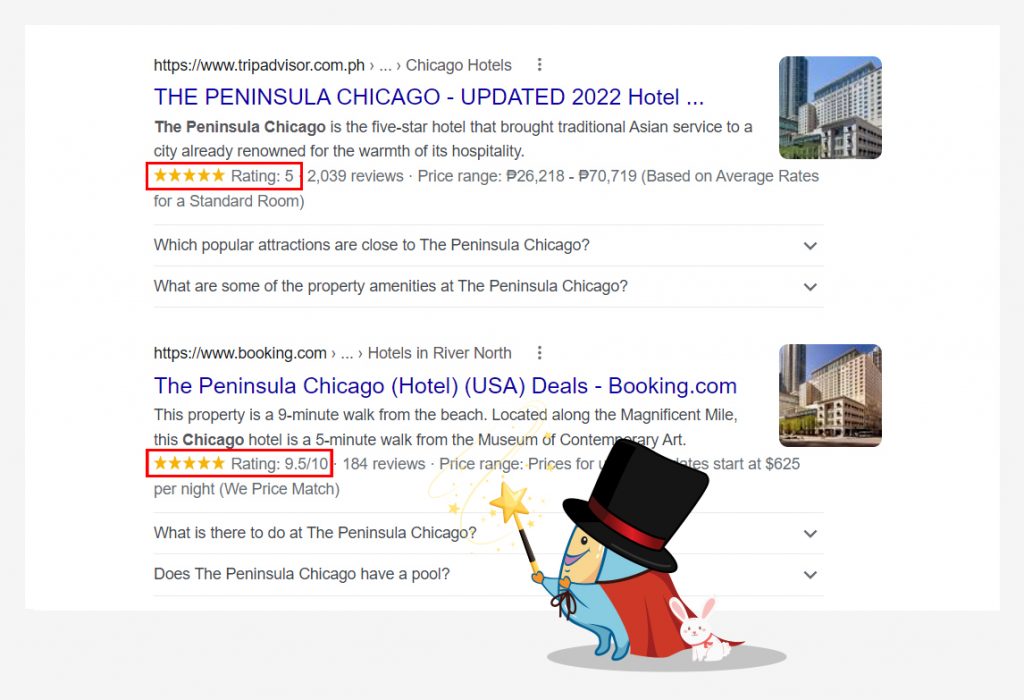
For the recipe markup, cooking time, ingredients, and even calories can be displayed underneath the search listing.
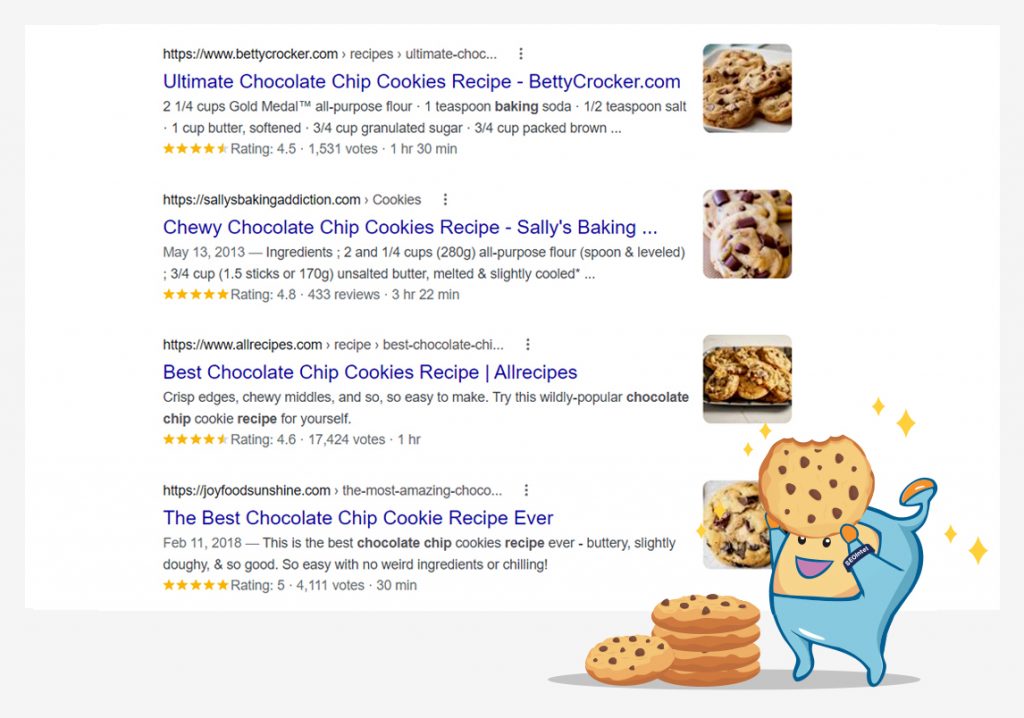
The music rich snippet provides more details on the musician such as their record label and musical genre.
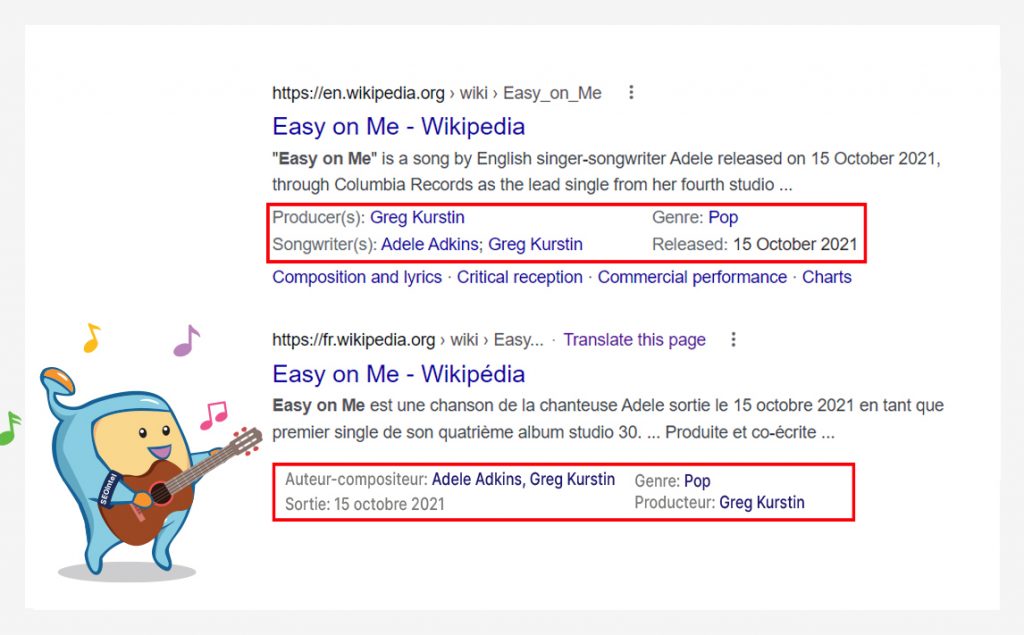
Product markups show important details about your product such as availability, price, and reviews. Ecommerce websites require these enhancements.
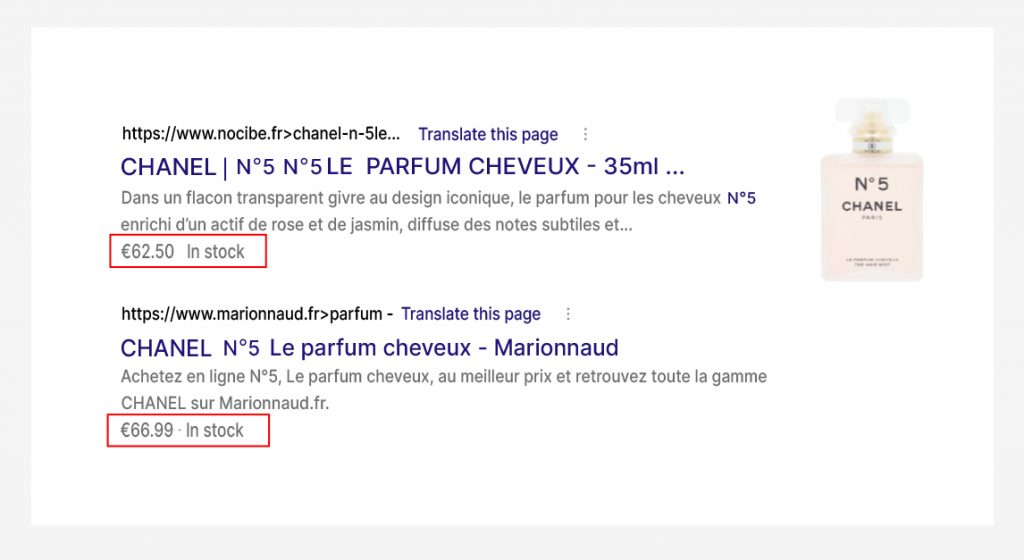
The organizational markup aids Google in comprehending crucial information about a company such as its address, logo, and contact information.
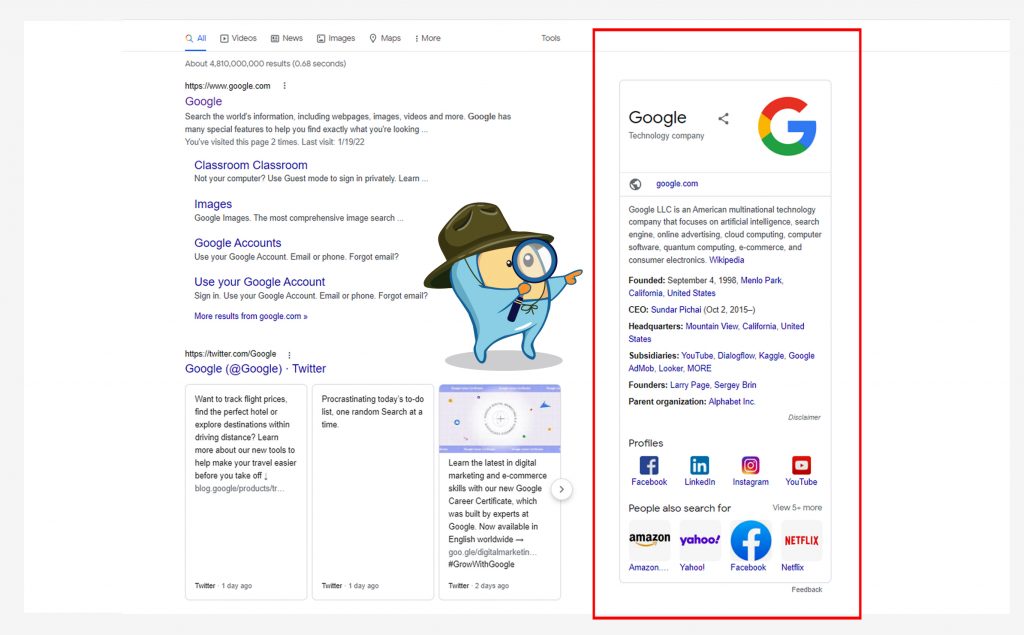
The top stories markup allows a site to appear in the search results’ “Top Stories” box. This only applies to websites that have been approved by Google News.
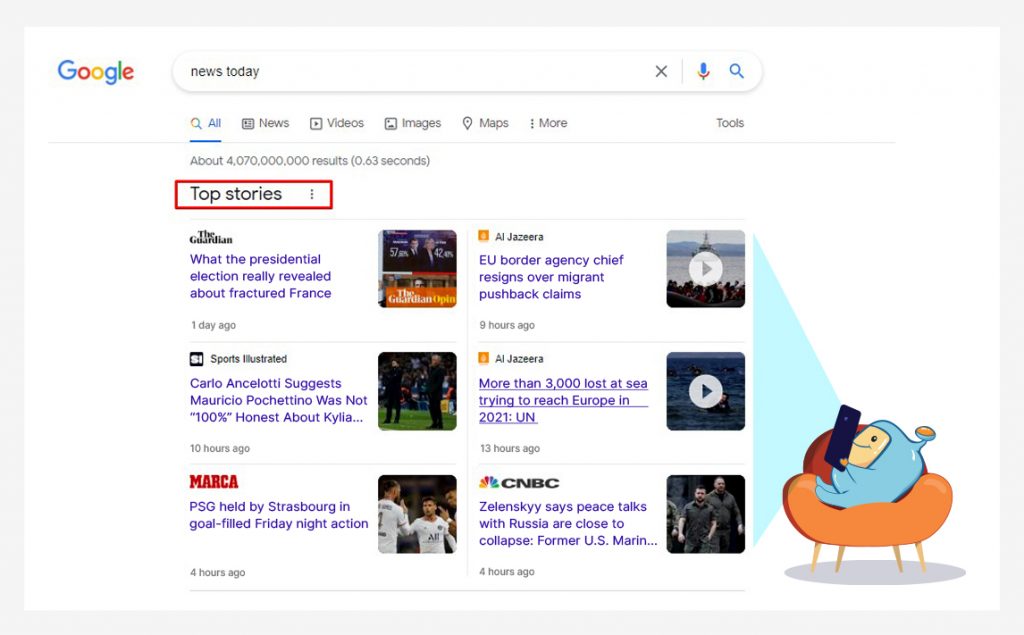
The video markup is for video content embedded on your website and can be used to indicate the video’s duration, license, production firm, and/or creator, as well as whether the content is suitable for children.
Videos on your page can’t be “seen” by search engines. As a result, video markup aids search engines in comprehending your video material and what they are about.
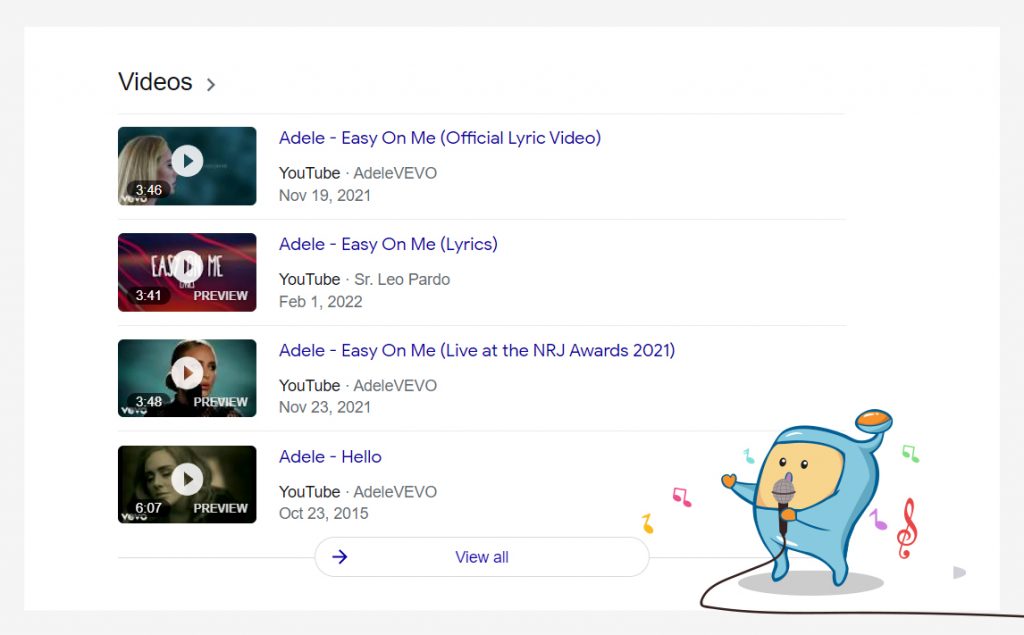
The events markup indicates crucial data about an upcoming event such as the time, date, and venue.

Structured data markup must be integrated in your HTML for your website to be eligible for a rich snippet.
Without structured data markup, Google will have a hard time displaying your website in the rich results.
It should be emphasized, however, that having structured markup does not guarantee that it will appear as a rich card.
What are structured data markup and schema? Search engines use schema to figure out what the material is about in search result snippets. Webmasters can describe parts of their content to search engine crawlers using a set of standardized standards (called schemas) that all major search engines agreed upon. This is accomplished by incorporating search engine-friendly tags (structured data markup).
Other factors that influence the implementation of structured data include:
The majority of websites use Schema.org markup for structured data type.
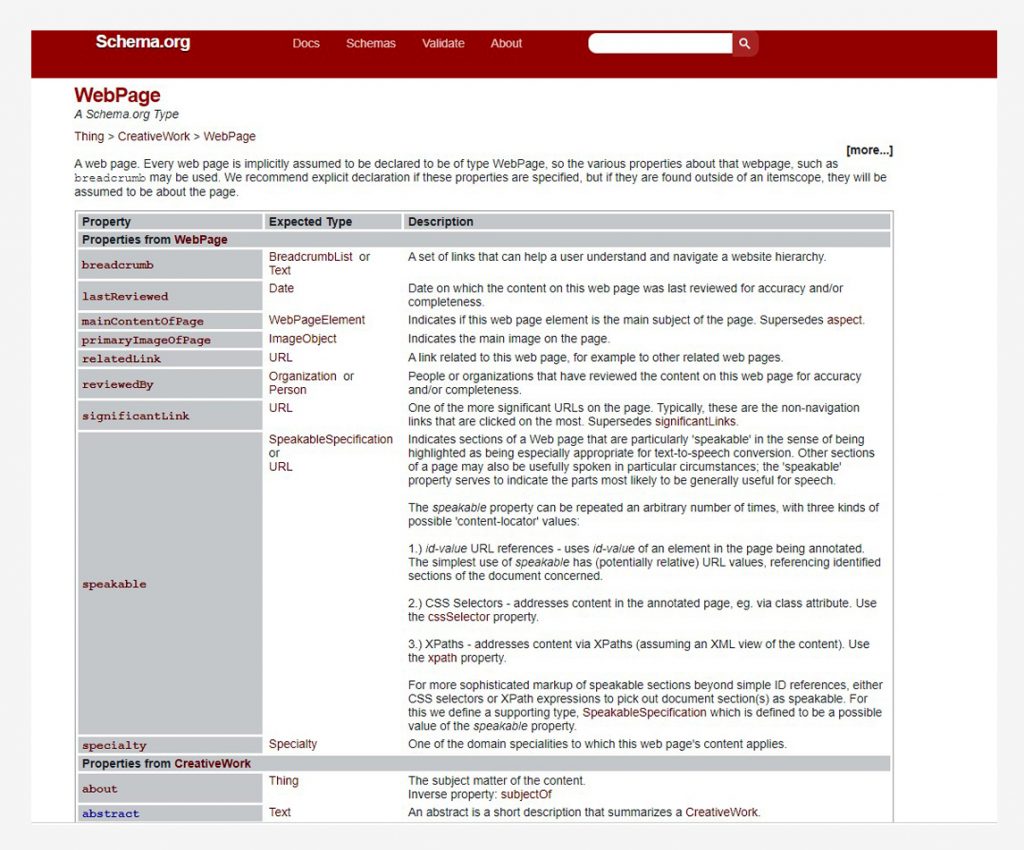
Schema is also supported by all of the main search engines such as Google, Bing, and Yandex.
To implement schema, all you have to do is go to Schema.org, look for the markup you want to utilize, and use the instructions on that page to markup your content.
Structured Data is also well documented on Google. Google’s stuff, if you are going to ask me, is easier to understand for non-developers.
It’s entirely up to you how you implement Structured Data code on your website. If you are not very knowledgeable about coding, there are also plenty of WordPress plugins to choose from that can implement basic schema.
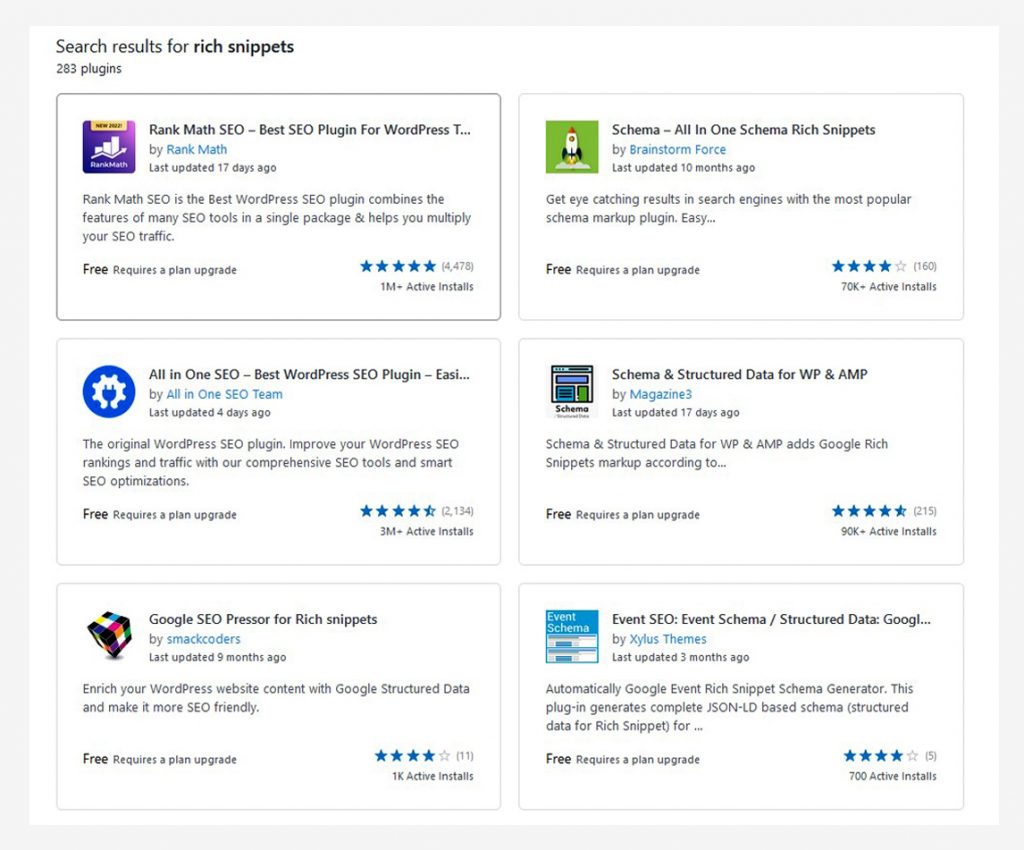
Microdata or RDFa are two options for adding Structured Data Markup without the usage of a plugin. However, I strongly advise you to use JSON-LD.
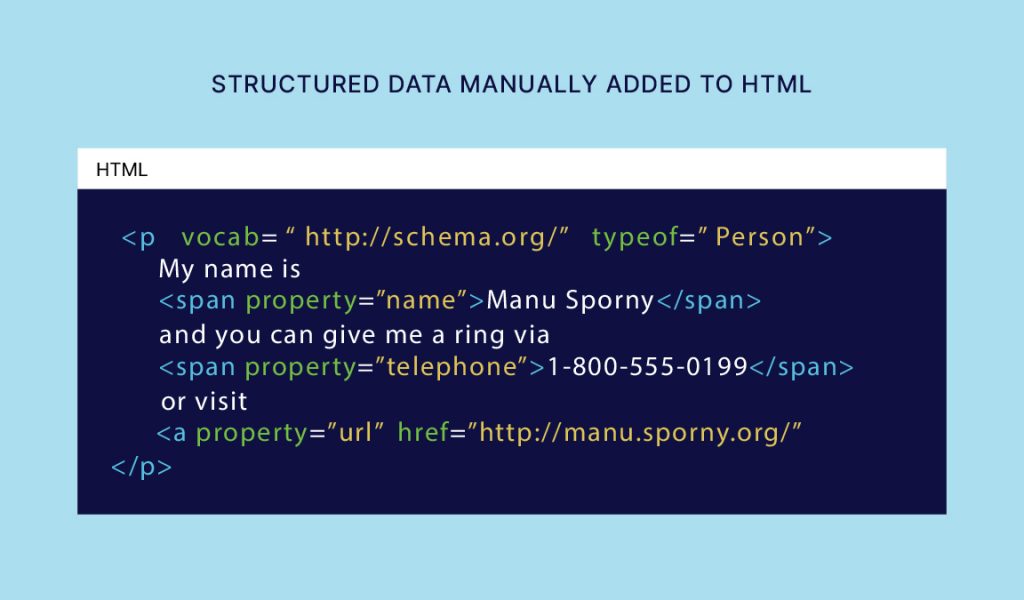
This is because JSON-LD is the simplest approach to adding Structured Markup to your page. Check the image below and compare it to the image above.
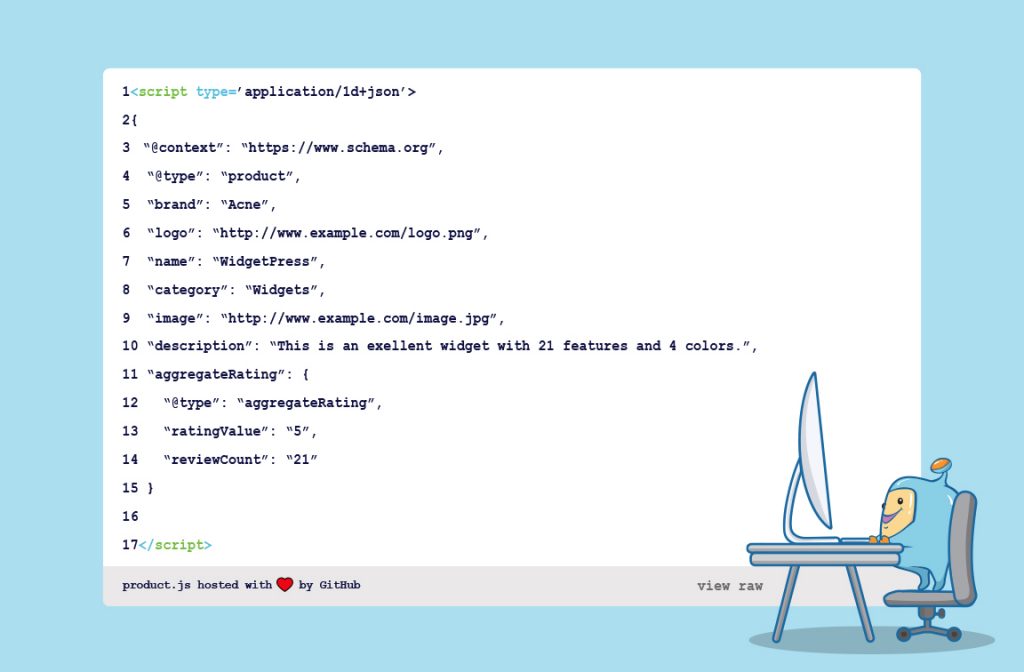
The final step is to double-check that your Structured Data is configured correctly. Google has released an amazing tool called the Rich Results Test to verify that you have marked up your page right.
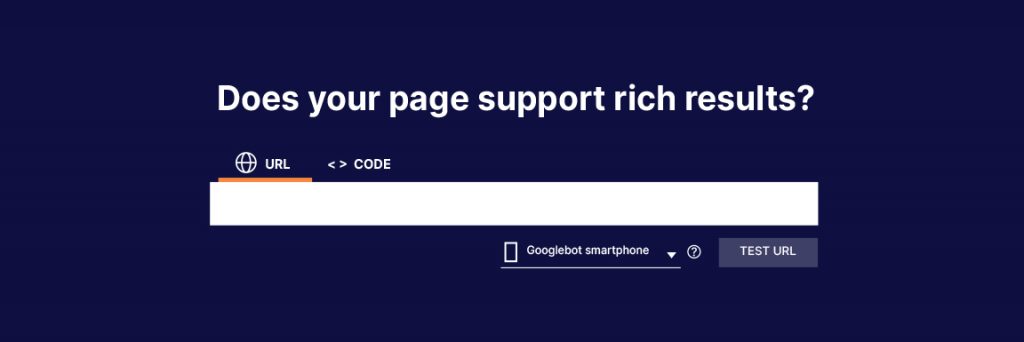
Even if you have everything set up perfectly, there’s no guarantee that Structured Data will result in Rich Snippets.
In fact, Google explicitly states this in their documentation:
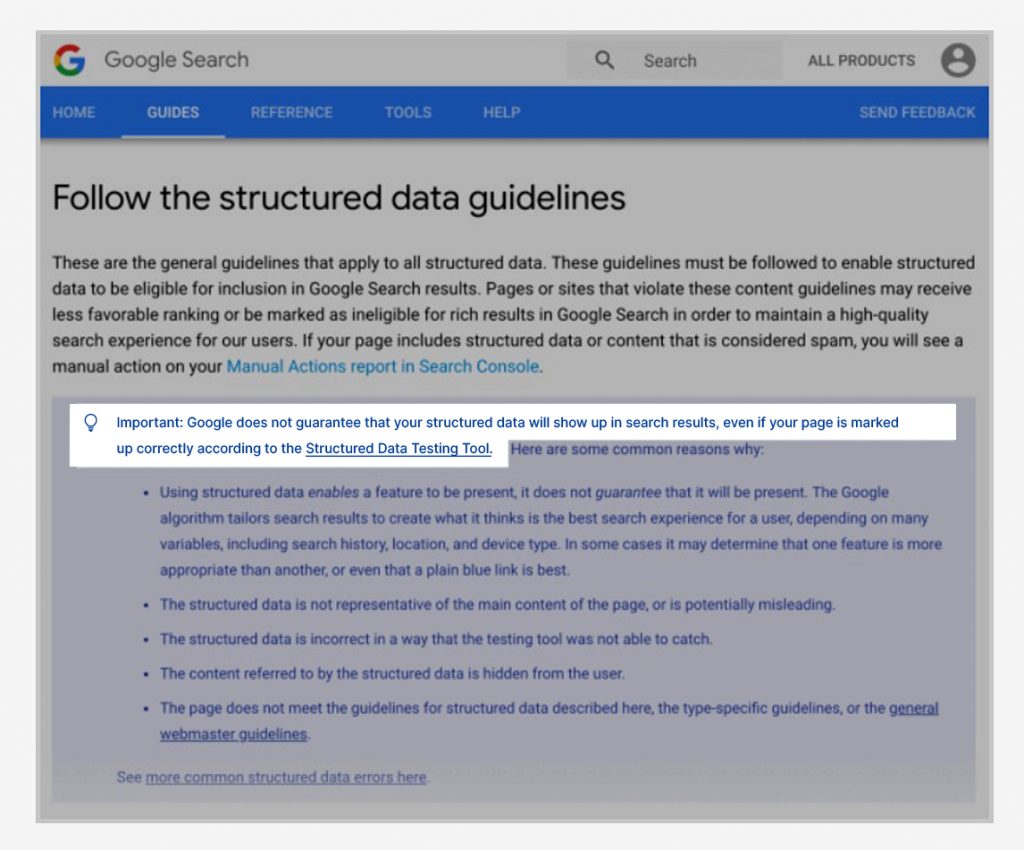
The use of structured data markup on your site will not immediately result in Rich Snippets being displayed for your blog post by the major search engines. Google, in particular, will examine and evaluate your markup before displaying richer results. It has been noted that there’s a pattern in how Google reacts to the introduction of structured data markup across many implementations:
This loop frequently perplexes site operators who then resort to “tweaking” their Schema.org implementation, further causing delays. Benci’s observations suggest that you should install the markup and wait around two months for the full results to appear before making any changes to the markup.
Finally, a clarification of the word “semi-permanent” used above: while the major search engines embraced Rich Snippets more than two years ago, they are still tweaking how they are implemented to assure the best final result.
This means that Rich Snippets will not be used to display all of your results, and what does and doesn’t appear will change over time. This is most apparent right now with the way Google shows Authorship, which was first introduced in 2013 but has since undergone multiple adjustments.
Similarly, Google has begun to punish sites that are found to be abusing Rich Snippets with the following notification:
“Markup on some pages on this site appears to use techniques such as marking up content that is invisible to users, marking up irrelevant or misleading content, and/or other manipulative behavior that violates Google’s Rich Snippet Quality guidelines. “
You don’t need to worry if you always take an ethical approach to your website and SEO, you probably have very little to worry about, knowing that short-term successes rarely lead to long-term advantages in SEO.
Rich snippets are wonderful for getting more attention and clicks to your site but bear in mind that the structured data behind them is part of a much larger picture.
The Knowledge Graph is built using structured data from Google. This is what makes Google’s search results more relevant and it also feeds other SERP elements like Knowledge Panels.
Understanding how the Knowledge Graph works and how to leverage it is an essential SEO skill to have now and in the future.
Did you know that using Schema not only helps with rich snippets, but it also helps boost rank for your site? Know more about it and how to apply advanced schema to your site in Clint Butler’s Schema course inside SEOIntel.